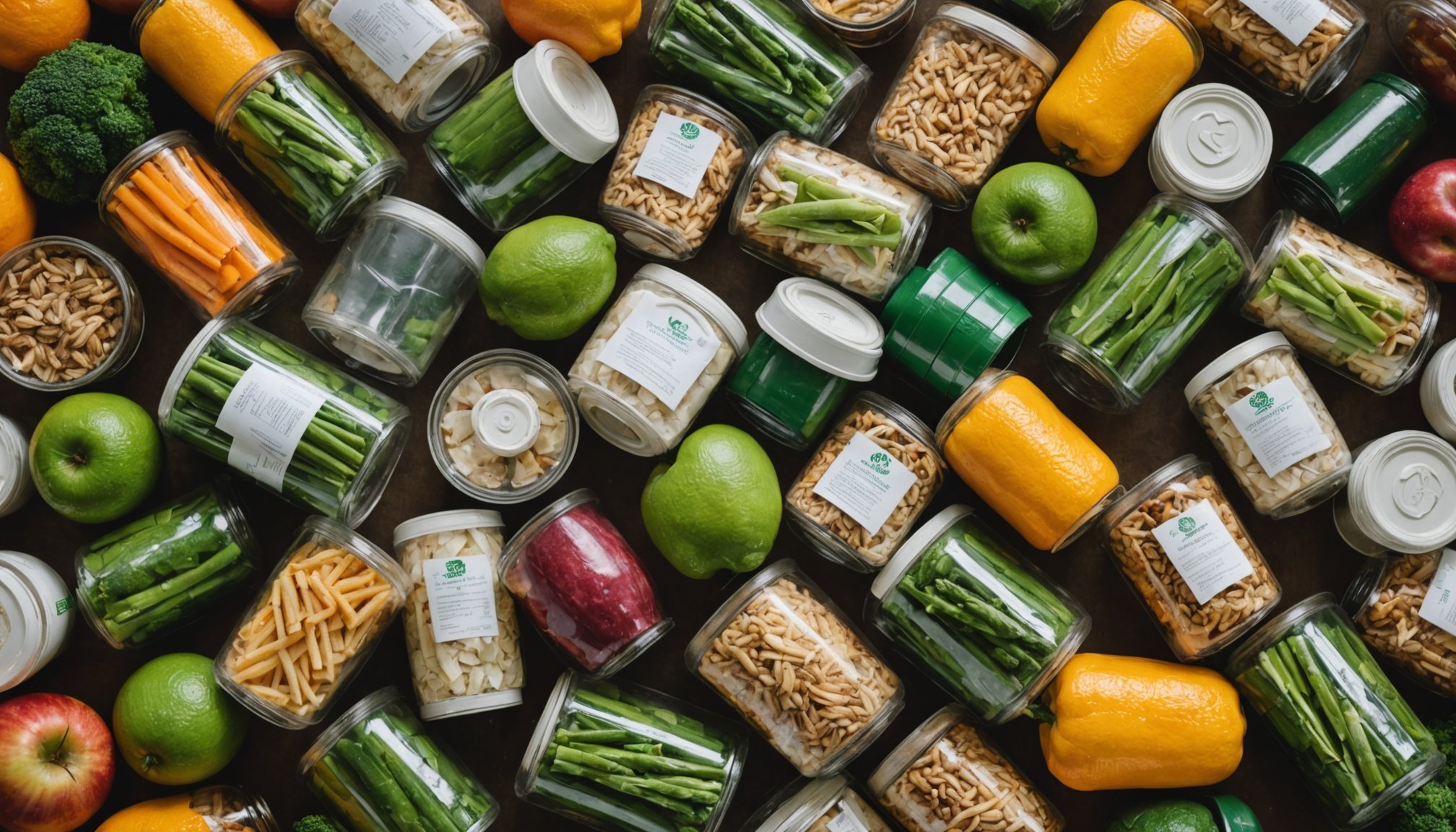Innovative Materials in Food Packaging
In recent years, there has been significant progress in developing sustainable materials for food packaging. The demand for eco-friendly alternatives is driven by environmental concerns and the need to reduce waste. Biodegradable packaging has emerged as a viable solution, offering several advantages. It decomposes naturally, reducing plastic pollution and the burden on landfills. These alternative packaging solutions are made from materials such as cornstarch, sugarcane, and even mushrooms, which are all renewable resources.
Brands are now embracing these innovations with enthusiasm. For example, a leading global food company has replaced its traditional plastic packaging with biodegradable options in several product lines. This shift not only aids environmental goals but also improves the brand’s image among eco-conscious consumers. Similarly, a beverage company has adopted mushroom-based materials for their product packaging, significantly cutting down on non-recyclable waste.
Also read : Innovative Solutions to Combat Over-Tourism at Britain’s Heritage Landmarks
These success stories show that implementing innovative materials can lead to substantial benefits. Not only do they align a brand with sustainability goals, but they also resonate well with today’s environmentally aware customers. Such real-world examples highlight the potential for other businesses to follow suit and contribute positively toward a sustainable future.
Government Regulations and Industry Standards
Government regulations and industry standards play a crucial role in shaping the future of food packaging. In the UK, strict regulations focus on reducing plastic waste and promoting sustainable materials. Key policies include mandates to limit single-use plastics and encourage the adoption of recyclable or biodegradable packaging. Compliance with these standards not only ensures adherence to the law but also positions businesses as responsible leaders in plastic waste reduction.
In parallel : Unlocking Telehealth Success: Proven Strategies for Rural UK Communities
UK regulations are structured to enforce a gradual yet consistent shift towards alternative packaging solutions. This involves not only adhering to current guidelines but also preparing for future updates in compliance standards. Businesses are encouraged to stay informed about these changes, investing in sustainable materials that align with the evolving legal landscape.
The impact of government policies extends beyond legal compliance. It inspires innovation and promotes industry practices that are in harmony with environmental goals. Companies that proactively adopt these standards benefit from increased brand loyalty among eco-conscious consumers, as they are seen as pioneers in the shift towards a more sustainable industry. This progressive approach underscores the significance of understanding and adapting to current regulations for long-term success.
Consumer Behaviour and Sustainability
Understanding the dynamics of consumer behaviour reveals significant trends in preferences for sustainable packaging. As eco-conscious consumers become more selective, their purchasing choices often favour companies that prioritise alternative packaging solutions. With environmental awareness at the forefront, brands see loyalty and repeated patronage from customers who value sustainability.
The market trend is morphing into a new model where sustainable materials aren’t just preferred, but expected. Consumers are not only looking for eco-friendly options, but they also want transparency in a brand’s commitment to environmental stewardship. Customers now actively influence market trajectories through their buying power, pushing companies towards integrating biodegradable packaging into their core offerings.
Brands responding to these trends enjoy enhanced customer loyalty, positioning them advantageously within a competitive marketplace. As businesses adapt, they not only meet evolving consumer preferences but also set themselves apart as industry pioneers.
Moving forward, adopting the right packaging strategies that align with these consumer expectations could determine a brand’s success. Encouraging consumer engagement with brands committed to effective sustainability can drive a positive shift towards broader environmental benefits across the industry.
Case Studies of Successful Implementations
Examining success stories in sustainable packaging reveals how industry leaders have adopted best practices to drive meaningful change. Several pioneering companies are at the forefront, showcasing how innovative materials can be integrated effectively.
One notable example is Patagonia, which transitioned to eco-friendly materials, aligning its packaging with its environmental ethos. This strategy not only enhanced its brand image but also led to cost reductions. Patagonia’s approach emphasizes the importance of research and development in adopting alternative packaging solutions.
Another leader is Unilever, which has implemented biodegradable packaging across various product lines. By focusing on minimizing plastic waste, Unilever managed to boost consumer trust and brand loyalty among eco-conscious consumers. Their success underscores the influence of sustainable practices on customer engagement.
From these case studies, several lessons emerge:
- Investing in sustainable materials can yield financial and brand benefits.
- Continuous innovation and adaptation are crucial in maintaining competitive advantage.
- Communicating a brand’s commitment to sustainability strengthens consumer relationships.
These examples provide practical tips for businesses, emphasizing the importance of innovation and consumer-oriented strategies in achieving sustainability goals.
Expert Opinions and Industry Insights
In the rapidly evolving field of food packaging, expert analysis provides valuable direction. Sustainability experts stress the critical role of innovative materials as catalysts for industry transformation. Their insights suggest that alternate packaging solutions, like biodegradable options, are integral to achieving long-term environmental objectives.
Several visionaries in the sector have advocated for embracing thought leadership. They highlight that companies fostering a culture of innovation are better positioned to navigate regulatory changes and consumer demands. This proactiveness in adopting sustainable practices often correlates with enhanced brand reputation and environmental stewardship.
Industry specialists further emphasize the importance of staying ahead with technological advancements. They predict that future solutions will likely merge sustainable materials with smart technologies, enhancing both functionality and sustainability. One emerging idea is the use of blockchain for traceability, ensuring that every step from production to recycling is transparent and eco-friendly.
The path forward, according to these industry insights, will be marked by collaboration. Businesses are encouraged to engage with stakeholders, from consumers to engineers, fostering a sustainability-focused community. This collective effort can significantly amplify the impact of individual actions, propelling the industry toward a more sustainable future.
Practical Tips for Businesses
Businesses today face increasing pressure to adopt sustainable packaging strategies. Effectively reducing plastic waste requires strategic planning and actionable steps. A primary consideration is selecting packaging solutions that align with environmental goals. For example, switching to biodegradable packaging can significantly cut down on landfill contributions. These materials decompose naturally, mitigating plastic pollution concerns.
Implementing these changes doesn’t have to be daunting. Start by conducting a materials audit to identify areas for improvement. Evaluate current packaging solutions and explore alternative materials such as cornstarch or mushroom-based options. Engaging suppliers who offer eco-friendly materials can streamline this transition.
It’s important for companies to stay informed about industry standards and compliance requirements. Resources like industry conferences and trade publications offer insights into the latest sustainability trends.
Moreover, investing in employee training on sustainable practices fosters a culture of environmental responsibility within the organisation. Encourage staff to participate in workshops and courses that emphasise eco-friendly methods.
Incorporating these practical tips not only enhances brand reputation but also aligns with the growing demands of eco-conscious consumers. Such proactive steps can place businesses at the forefront of the sustainability movement.

